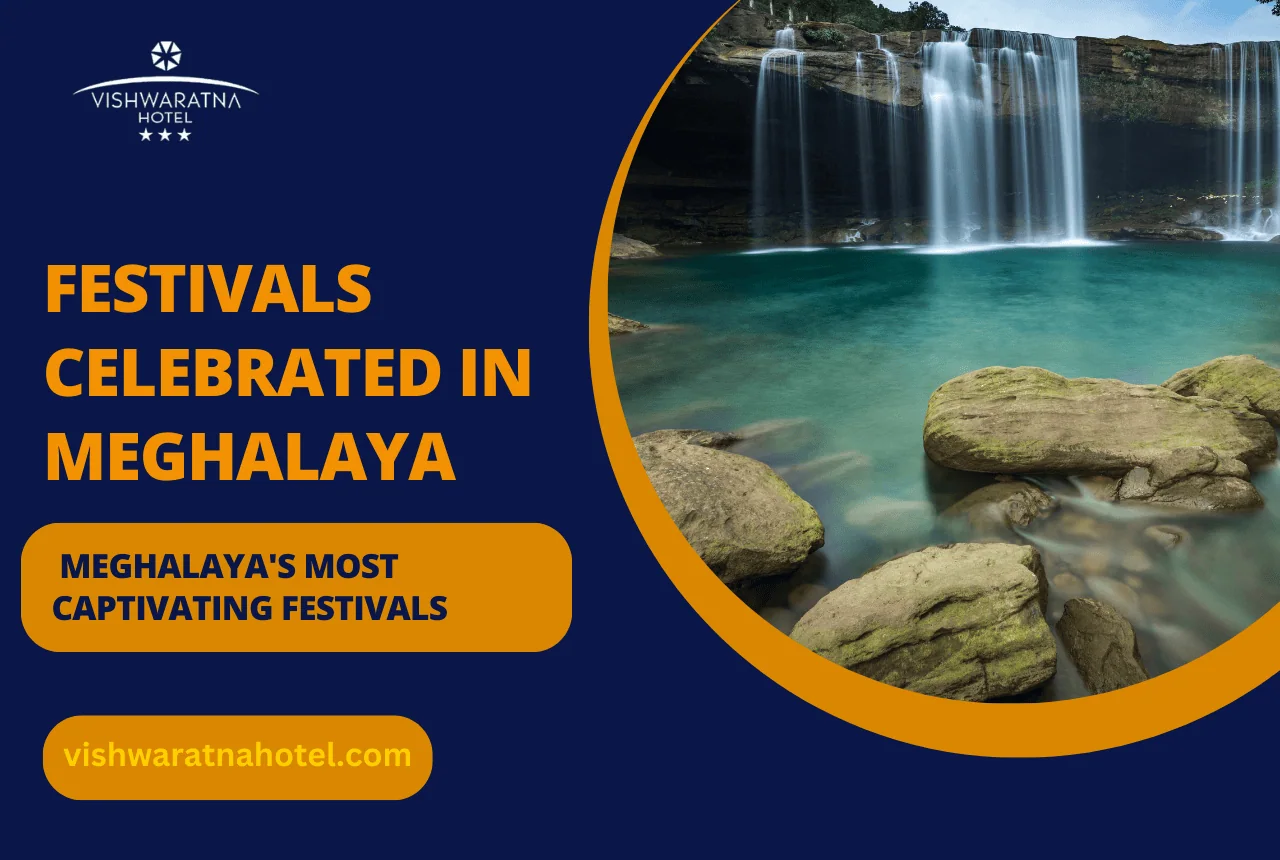Nestled in the northeastern part of India, Meghalaya is a state renowned for its lush landscapes, rolling hills, and vibrant cultural tapestry. Home to diverse indigenous communities, Meghalaya’s rich traditions are best experienced through its myriad festivals. These celebrations offer a unique glimpse into the state’s heritage, showcasing traditional dances, music, and delectable local cuisine. For anyone eager to immerse themselves in the cultural heartbeat of Northeast India, attending these festivals is an absolute must. In this blog post, we’ll explore five of Meghalaya’s most captivating festivals that promise an unforgettable experience.
Exploring the Richness of Festivals Celebrated in Meghalaya
Festivals in Meghalaya are more than just events; they are the lifeblood of the state’s cultural identity. Deeply rooted in the traditions of its major tribes—the Khasi, Jaintia, and Garo—these festivals serve as a testament to the community’s resilience and unity. Often marking significant occasions such as harvests, religious observances, or communal gatherings, each festival is a vibrant display of the tribe’s unique customs and beliefs. October stands out as a particularly festive month, with a plethora of celebrations that envelop the state in a spirit of camaraderie and devotion.
1. Wangala Festival (Garo)
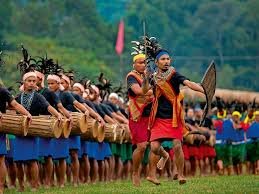
Overview
The Wangala Festival, affectionately known as the “100 Drums Festival,” is the most celebrated event among the Garo tribe of Meghalaya. This harvest festival is a tribute to Saljong, the Sun God of fertility, expressing gratitude for a bountiful harvest. The festival’s name derives from the mesmerizing sight and sound of a hundred drums being played in unison, creating an electrifying atmosphere.
Timing and Significance
Traditionally held in the second week of November, the Wangala Festival signifies the end of the agricultural season and the onset of winter. It’s a time for the Garo community to relax and revel after months of hard work in the fields. In 2025, the festival is slated for November 7th, offering a perfect opportunity for visitors to partake in the festivities.
Rituals and Activities
The festival spans multiple days, each marked by distinct ceremonies:
- Ragula Ceremony: On the first day, this ritual is performed in the village chief’s house, setting the tone for the celebrations.
- Kakkat Ceremony: The second day involves this ceremony, further amplifying the festive spirit.
The highlight is the dance performed in parallel lines by men and women, adorned in vibrant attire and feathered headgear. The rhythmic beats of long, oval-shaped drums, accompanied by gongs and flutes, create an enchanting musical ensemble. This dance not only entertains but also serves as a medium to narrate tales of valor, romance, and daily life.
Cultural Significance
Beyond the revelry, the Wangala Festival plays a pivotal role in preserving and promoting Garo culture. It reinforces community bonds, passes down traditions to younger generations, and offers outsiders a genuine insight into Garo heritage. The festival has evolved over the years, yet it remains a cornerstone of cultural identity for the Garo people.
2. Nongkrem Dance Festival (Khasi)
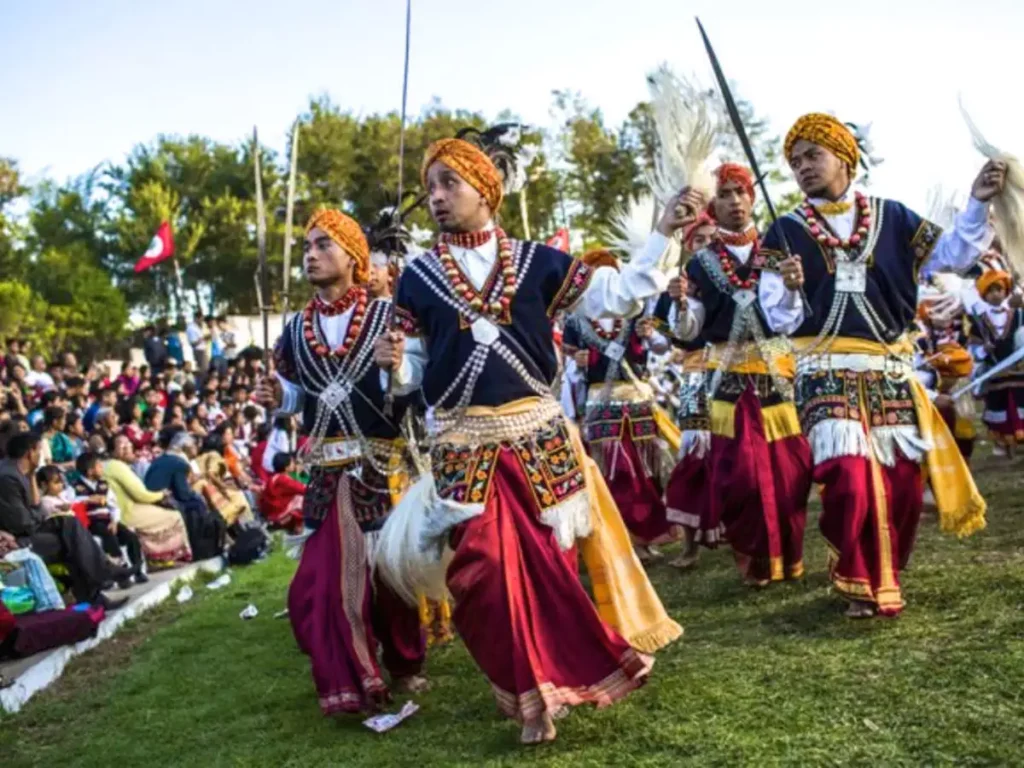
Overview
The Nongkrem Dance Festival is a significant cultural and religious event for the Khasi tribe. Held annually, this festival is a vibrant expression of gratitude and a plea for prosperity. It’s a time when the community comes together to honor their deities and celebrate their rich heritage.
Timing and Significance
Typically observed in late October or early November, the Nongkrem Dance Festival is dedicated to appeasing Ka Blei Synshar, the Goddess who governs the people’s welfare. The rituals are performed to ensure a bountiful harvest and the well-being of the community. The festival is held in Smit village, located near Shillong Peak, offering a picturesque backdrop to the vibrant celebrations.
Rituals and Activities
The festival is marked by several traditional rituals:
- Pomblang Ceremony: This involves the sacrifice of goats, offered to the deity as a mark of reverence.
- Nongkrem Dance: Men and women, dressed in traditional Khasi attire, perform this dance. Women don silk dresses adorned with gold and silver ornaments, while men wear dhotis, waistcoats, and turbans, carrying swords as they dance. The synchronized movements, accompanied by traditional music, create a mesmerizing spectacle.
Cultural Significance
The Nongkrem Dance Festival is more than a religious observance; it’s a celebration of Khasi identity. It serves as a platform to pass down traditions, music, and dance forms to younger generations, ensuring the preservation of their rich cultural heritage. For visitors, it’s an opportunity to witness the Khasi community’s devotion and artistic expression firsthand.
3. Shad Suk Mynsiem (Khasi)
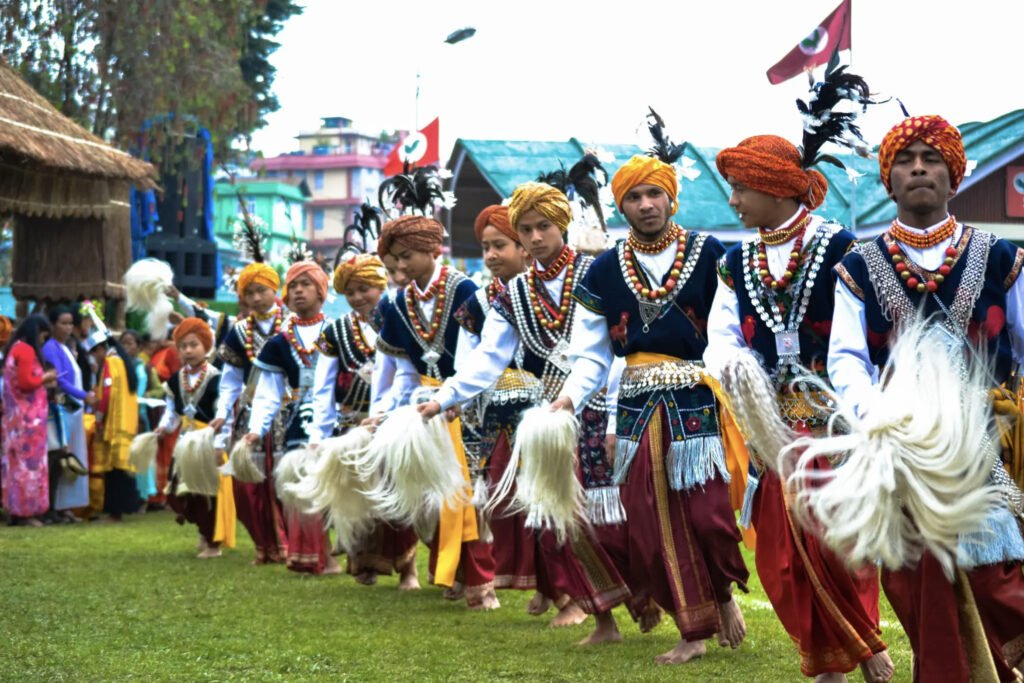
Overview
Shad Suk Mynsiem, translated to “Dance of the Joyful Heart,” is a prominent festival for the Khasi people. Celebrated with great fervor, it symbolizes the thanksgiving of the community for the blessings received and marks the end of the harvest season.
Timing and Significance
Held annually in April, Shad Suk Mynsiem is a three-day festival that reflects the agrarian roots of the Khasi tribe. It’s a time when the community expresses gratitude for a successful harvest and seeks blessings for future prosperity. The festival is a harmonious blend of religious rites and cultural performances, showcasing the Khasi way of life.
Rituals and Activities
The festival is characterized by:
- Traditional Dances: Men and women, dressed in traditional attire, perform dances to the rhythm of drums and flutes. The men’s energetic movements complement the graceful steps of the women, symbolizing the balance of life.
- Religious Offerings: The festival is deeply spiritual, with prayers and rituals conducted to seek divine blessings for the community.
Cultural Significance
Shad Suk Mynsiem is a cornerstone of Khasi culture, embodying the values of modesty, purity, and gratitude. It serves as an opportunity for the younger generation to connect with their heritage and for outsiders to appreciate the depth of Khasi traditions.
4. Christmas (Statewide)
Christmas is a significant festival in Meghalaya, widely celebrated across the state due to its substantial Christian population. It marks the birth of Jesus Christ and is observed with great enthusiasm, transforming towns and villages into vibrant, festive spaces.
Timing and Significance
Christmas is celebrated on December 25th every year, with preparations starting well in advance. The festival holds deep religious significance, symbolizing love, joy, and togetherness.
Rituals and Activities
- Church Services: Midnight mass and special prayers are held in churches, with hymns and sermons emphasizing the values of Christmas.
- Carol Singing & Decorations: Homes, streets, and churches are decorated with lights, Christmas trees, and nativity scenes. Carol groups visit homes, spreading the festive spirit.
- Traditional Feasts & Gatherings: Families and communities come together for special meals, featuring traditional dishes and Christmas treats.
Cultural Significance
Christmas in Meghalaya reflects the deep-rooted Christian traditions of the state. It is a time of unity, charity, and celebration, where people exchange gifts and share joy with loved ones.
Updated Information
For 2025, the Christmas holidays in Meghalaya are from December 24-26.
5. Meghalaya Autumn Festival (Statewide)
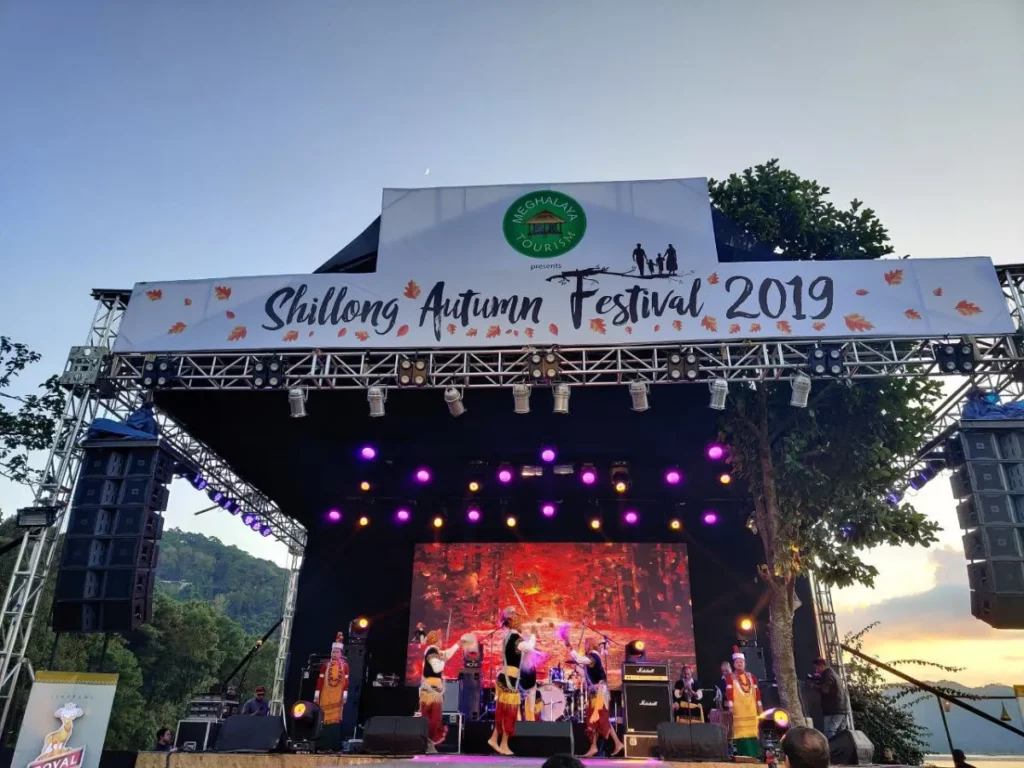
The Meghalaya Autumn Festival is one of the state’s most exciting cultural celebrations, aimed at promoting tourism and showcasing Meghalaya’s diverse traditions.
Timing and Significance
Held annually in October, the festival is organized by the Meghalaya Tourism Department to highlight the state’s vibrant heritage, natural beauty, and artistic talent.
Rituals and Activities
- Live Music Performances: Popular local and national artists perform at the festival, making it a major attraction for music lovers.
- Art Exhibitions and Indigenous Games: Various art forms, handicrafts, and traditional games are displayed, allowing visitors to engage with the state’s cultural roots.
- Boat Races & Food Stalls: Traditional boat races take place on the serene waters of Meghalaya, while food stalls serve local delicacies, offering a gastronomic delight.
Cultural Significance
The festival plays a vital role in promoting Meghalaya’s tourism, encouraging visitors to explore its breathtaking landscapes, unique cuisine, and rich cultural traditions.
Conclusion
Meghalaya’s festivals offer a unique and immersive cultural experience that blends music, dance, and tradition. From the rhythmic beats of Wangala to the graceful movements of Nongkrem, these celebrations showcase the state’s rich heritage and communal spirit. If you’re planning a visit to Meghalaya, be sure to time your trip around these festivals to witness the state at its vibrant best. Have you attended any of these festivals? Share your experiences in the comments below!


